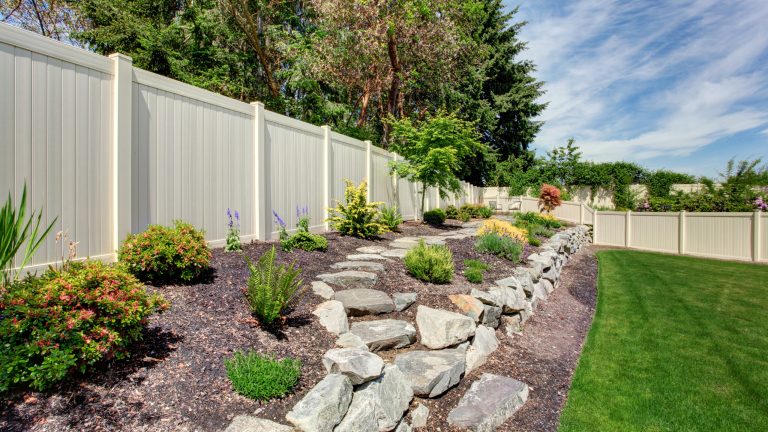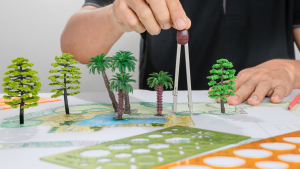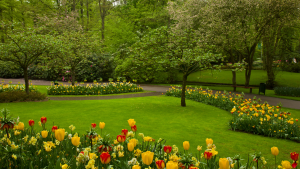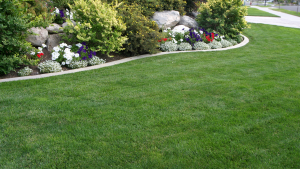Welcome to our comprehensive guide on achieving balance and symmetry in your landscape design. A well-balanced garden isn’t merely about aesthetics; it’s a testament to meticulous planning and thoughtful design. Throughout this article, we’ll delve into what contributes to imbalance in a garden and provide practical solutions to rectify them. Moreover, we’ll equip you with expert tips for crafting a perfect garden layout that radiates harmony and symmetry.
Whether you’re a novice or an experienced gardener, our guide will empower you to create an outdoor space that not only delights the eyes but also nourishes the soul. Looking for landscaping expertise? Call or message Baton Rouge Landscape Pros today to discuss updates, remodels, or new construction ideas. We’re eager to assist you!
What Makes a Garden Feel Out of Balance?
Unlocking balance in your landscape design begins with understanding the elements that can throw it off-kilter. Here are some factors to consider:
- Size: When elements within a garden vary significantly in size, it can create a sense of imbalance. For example, a small flower bed overshadowed by a massive tree may feel disproportionate.
- Color: The distribution of color throughout your garden can impact its overall balance. More than one color in a particular area can overwhelm the space, while a lack of color variation can make the garden feel monotonous.
- Density: The density of plantings and features is crucial in achieving balance. Cluttered areas can feel chaotic, while sparse areas may need more visual interest.
How Does Weight Create Balance?
Weight in landscape design refers to the visual mass of objects and elements within a space. By strategically distributing weight, you can achieve a sense of equilibrium. For instance, placing larger plants or features closer to the center of your garden can anchor the space. At the same time, lighter elements can be positioned towards the periphery to create a sense of movement and flow.
How to Layout a Perfect Garden
1. Placement of Flower Beds and Features: Consider the natural flow of movement within your garden and strategically place flower beds and features to guide the eye and create focal points. For instance, place a focal feature like a fountain or a sculpture at a central point where it can be admired from various vantage points. Flower beds can be arranged along pathways or around vital focal points to draw attention and create visual interest.
2. Creating Vertical Layers with Plant Material: Utilize vertical space by incorporating plants of varying heights. Tall trees and shrubs can provide a sense of enclosure and privacy, while groundcovers and low-growing plants can fill the lower layers. Consider planting vines to climb trellises or walls, adding a vertical dimension to your garden and maximizing space.
3. Choose the Right Flowers: Choose flowers with complementary forms, colors, and textures. Pay attention to bloom times to ensure continuous interest throughout the seasons. Incorporate a mix of annuals, perennials, and bulbs to ensure a succession of blooms from spring through fall. Think about the overall color palette of your garden and choose flowers that harmonize with the surrounding landscape.
4. Choose Flowers That Create Contrast: Incorporate flowers with contrasting colors and shapes to add visual excitement and drama to your garden. Pair bold, vibrant blooms with softer hues to create dynamic color schemes. Consider the texture of the flowers as well, mixing delicate petals with more robust forms for added interest.
5. Layer Plants According to Height: Arrange plants in layers, with taller specimens towards the back and shorter plants towards the front. This gives your garden dimension and depth. Beds. Group plants with similar height and growth habits together to create cohesive plantings that flow seamlessly from one area to the next. Leave space between plants to allow for growth and prevent overcrowding as they mature.
6. Visualize Your Future Garden: Before planting, take the time to visualize how your garden will look once mature. Consider plant growth, sunlight patterns, and seasonal changes to ensure a cohesive and balanced design. Create a rough sketch or use online garden design tools to map out your vision, taking into account the scale and proportions of your space. Remember to consider practical elements such as access paths, seating areas, and focal points to enhance the functionality and enjoyment of your garden.
Conclusion
Achieving balance and symmetry in your landscape Design is about producing, not simply about looks. A harmonious outdoor space that enhances your enjoyment and well-being. By paying attention to elements such as size, color, and density and implementing strategic design principles, you can create a visually stunning and perfectly balanced garden. So forward, let your imagination run wild and alter your outdoor space into a sanctuary of harmony and beauty. Happy gardening!
Check this post about Baton Rouge’s Natural Orchestra: The Sounds of Spring in Your Garden





